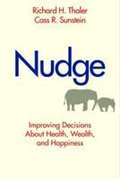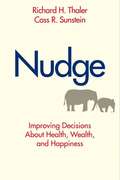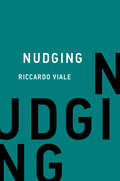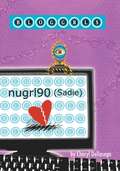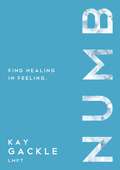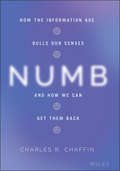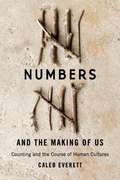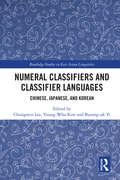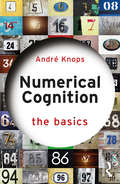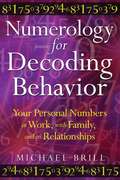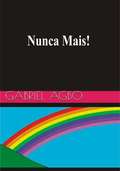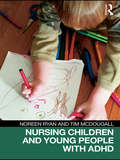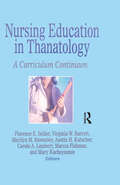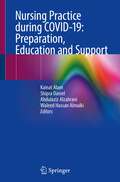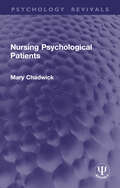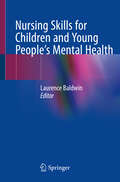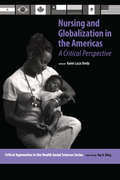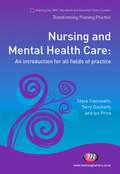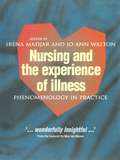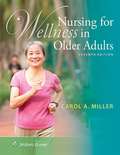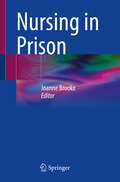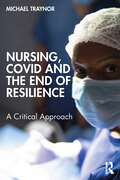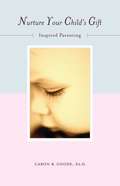- Table View
- List View
Nudge: Improving Decisions About Health, Wealth, And Happiness
by Cass R. Sunstein Richard H. ThalerEvery day, we make decisions on topics ranging from personal investments to schools for our children to the meals we eat to the causes we champion. Unfortunately, we often choose poorly. The reason, the authors explain, is that, being human, we all are susceptible to various biases that can lead us to blunder. Our mistakes make us poorer and less healthy; we often make bad decisions involving education, personal finance, health care, mortgages and credit cards, the family, and even the planet itself. Thaler and Sunstein invite us to enter an alternative world, one that takes our humanness as a given. They show that by knowing how people think, we can design choice environments that make it easier for people to choose what is best for themselves, their families, and their society. Using colorful examples from the most important aspects of life, Thaler and Sunstein demonstrate how thoughtful "choice architecture" can be established to nudge us in beneficial directions without restricting freedom of choice.
Nudge: Improving Decisions About Health, Wealth, and Happiness
by Cass R. Sunstein Richard H. ThalerEvery day, we make decisions on topics ranging from personal investments to schools for our children to the meals we eat to the causes we champion. Unfortunately, we often choose poorly. The reason, the authors explain, is that, being human, we all are susceptible to various biases that can lead us to blunder. Our mistakes make us poorer and less healthy; we often make bad decisions involving education, personal finance, health care, mortgages and credit cards, the family, and even the planet itself. Thaler and Sunstein invite the listener to enter an alternative world, one that takes our humanness as a given. They show that by knowing how people think, we can design choice environments that make it easier for people to choose what is best for themselves, their families, and their society. Using colorful examples from the most important aspects of life, Thaler and Sunstein demonstrate how thoughtful "choice architecture" can be established to nudge us in beneficial directions without restricting freedom of choice. Nudgeoffers a unique new take-from neither the left nor the right-on many hot-button issues, for individuals and governments alike. This is one of the most engaging and provocative audio books to come along in many years.
Nudging
by Riccardo VialeHow &“nudges&” by government can empower citizens without manipulating their preferences or exploiting their biases.We&’re all familiar with the idea of &“nudging&”—using behavioral mechanisms to encourage people to make certain choices—popularized by Richard Thaler and Cass Sunstein in their bestselling 2008 book Nudge. This approach, also known as &“libertarian paternalism,&” goes beyond typical programs that simply provide information and incentives; nudges can range from automatic enrollment in a pension plan to flu-shot scheduling. In Nudging, Riccardo Viale explores the evolution of nudging and proposes new approaches that would empower citizens without manipulating them paternalistically. He shows that we can use the tools of the behavioral sciences without abandoning the principle of conscious decision-making. Viale discusses the work of Herbert Simon, Gerd Gigerenzer, Daniel Kahneman, and Amos Tversky that laid the foundation of behavioral economics, describes how policy makers have sought to help people avoid bad decisions, offers examples of effective nudging, and considers how to nudge the nudgers. How can we tell good nudges from bad nudges? Viale explains that good nudges help us avoid bias and encourage deliberate decision making; bad nudges, on the other hand, use bias to nudge people unconsciously into unintentional behaviors. Bad nudges attempt to compel decisions based on economic rationality. Good nudges encourage decisions based on a pragmatic, adaptive, ecological kind of rationality. Policy makers should take note.
Nugrl90 (Sadie)
by Cheryl DellasegaSadie, a.k.a. nugrl90, finds out that her parents are really, truly getting divorced, but now her family is moving! She has to start the school year as the new girl. So Sadie creates a blog to sort out every new W3TP (What's Wrong With This Picture?) in her life.
Numb: Find Healing In Feeling
by Kay GackleI feel numb.Kay Gackle has heard these words for years as a therapist. Then one day, Kay found she was saying these exact same words.The phrase feeling numb is a bit ironic. Is it a feeling if we "feel" nothing? Being numb can be considered a feeling the same as white is considered a color. The color white appears because it absorbs no color. White is literally the absence of color. In the same way, numb is the absence of feeling. The color white can be seen when it is against a background of other colors. Likewise, we recognize being numb against the knowledge of where other feelings would typically exist. We know that we would naturally feel in a certain way, but we just don't feel anything.In this book, we identify what being numb looks like in everyday life, how we get numb, and the problems and symptoms surrounding it. Not stopping there, we will journey together into a deeper understanding of feelings and begin to let ourselves feel again. Through other’s stories, engaging questions, and practical tools, we can find healing and move beyond being numb.
Numb: How the Information Age Dulls Our Senses and How We Can Get them Back
by Charles R. ChaffinDiscover how to manage this noisy world without it managing you. In Numb, distinguished author Dr. Charles R. Chaffin delivers a fun and evidence-based exploration of how you can devote more attention on what you believe is important while ignoring the distractions that increasingly permeate your life. Using research from cognitive, education, positive, and clinical psychology, the book identifies the sources of noise and distraction in this information age and how we can manage it in all aspects of our lives. You'll learn about: How experiences in technology, from social media to selfies to porn, impact our ability to engage and connect with others The news we consume and the impact of confirmation bias, filter bubbles, and tribalism How FOMO and choice overload impact our decision-making The power of our attention in all aspects of our daily lives Perfect for anyone interested in the expanding impact of the information age on our collective psyche, ;Numb helps empower you to use technology and information not as a destination, but as a tool towards authenticity and empowerment.
Number Talks, Grades K-5: Helping Children Build Mental Math and Computation Strategies
by Sherry ParrishNumber Talks A five- to fifteen-minute classroom conversation around purposefully crafted computation problems that are solved mentally. The best part of a teacher's day. This dynamic multimedia resource was created in response to the requests of teachers--those who want to implement number talks but are unsure of how to begin and those with experience who want more guidance in crafting purposeful problems. It supports teachers in understanding: what a classroom talk is; how to follow students' thinking and pose the right questions to build understanding; how to prepare for and design purposeful number talks; and how to develop grade-level-specific strategies for the operations of addition, subtraction, multiplication, and division. Number Talks supports the Common Core State Standards for Mathematics.
Numbers and the Making of Us: Counting and the Course of Human Cultures
by Caleb EverettNumber concepts are a human invention developed and refined over millennia. They allow us to grasp quantities precisely: recent research shows that most specific quantities are not perceived in the absence of a number system. Numbers are not innate or universal; yet without them, the world as we know it would not exist.
Numeral Classifiers and Classifier Languages: Chinese, Japanese, and Korean (Routledge Studies in East Asian Linguistics)
by Chungmin Lee; Young-Wha Kim; Byeong-uk YiFocusing mainly on classifiers, Numeral Classifiers and Classifier Languages offers a deep investigation of three major classifier languages: Chinese, Japanese, and Korean. This book provides detailed discussions well supported by empirical evidence and corpus analyses. Theoretical hypotheses regarding differences and commonalities between numeral classifier languages and other mainly article languages are tested to seek universals or typological characteristics. The essays collected here from leading scholars in different fields promise to be greatly significant in the field of linguistics for several reasons. First, it targets three representative classifier languages in Asia. It also provides critical clues and suggests solutions to syntactic, semantic, psychological, and philosophical issues about classifier constructions. Finally, it addresses ensuing debates that may arise in the field of linguistics in general and neighboring inter-disciplinary areas. This book should be of great interest to advanced students and scholars of East Asian languages.
Numerical Cognition (The Basics)
by Andre KnopsNumerical Cognition: The Basics provides an understanding of the neural and cognitive mechanisms that enable us to perceive, process, and memorize numerical information. Starting from basic numerical competencies that humans share with other species, the book explores the mental coding of numbers and their neural representation. It explains the strategies of mental calculation, their pitfalls and their development, as well as the developmental steps children make while learning about numbers. The book gradually builds our understanding of the underlying mental processes of numeracy and concludes with an insightful examination of the diagnosis, etiology and treatment of dyscalculia. Written in an accessible manner, the book summarizes and critically evaluates the major psychological explanations for various empirical phenomena in numerical cognition. Containing a wealth of student-friendly features including end of chapter summaries, informative figures, further reading lists, and links to relevant websites, Numerical Cognition: The Basics is an essential starting point for anybody new to the field.
Numerical Reasoning in Judgments and Decision Making about Health
by Jay Schulkin Britta L. AndersonEvery day thousands of individuals need to make critical decisions about their health based on numerical information, yet recent surveys have found that over half the population of the United States is unable to complete basic math problems. How does this lack of numerical ability (also referred to as low numeracy, quantitative illiteracy or statistical illiteracy) impact healthcare? What can be done to help people with low numeracy skills? Numerical Reasoning in Judgments and Decision Making about Health addresses these questions by examining and explaining the impact of quantitative illiteracy on healthcare and in specific healthcare contexts, and discussing what can be done to reduce these healthcare disparities. This book will be a useful resource for professionals in many health fields including academics, policy makers, physicians and other healthcare providers.
Numerology for Decoding Behavior: Your Personal Numbers at Work, with Family, and in Relationships
by Michael BrillUsing numerology to reveal behavior patterns in order to work through them • Shows how to find anyone’s personal challenges and greatest strengths • Presents simple numeric exercises that use the first vowel and first consonant of a name and the birth month and day • Reveals how this method of numerology can be applied by managers, educators, health professionals, sales people, and parents Numbers and letters are the blueprints of our lives. By studying the patterns they create--whether it’s a name, an address, or a date--we can learn more about ourselves, others, and how to best interact with those around us. Providing simple numeric exercises that use only the first vowel and first consonant of a person’s name and their birth month and day, Michael Brill shows how to identify anyone’s reactive and proactive behavior patterns--along with their underlying causes--to prevent and resolve interpersonal issues as well as recognize and change our own negative personal tendencies. Combining numerology with psychology, he explains the connection between the first name and behavior at work, the middle name and social-emotional patterns in relationships, and the last name and family dynamics. Illustrating how this information can be applied by managers, educators, health professionals, sales people, and parents, he reveals how to find anyone’s personal challenges and greatest strengths through their Achievement Number as well as how to use this number for a more accurate understanding of an individual’s behavior patterns. Offering extensive examples, interpretations, and exercises, he reveals how recognizing these facets of our behavior is the first step to working through our negative patterns and effecting personal transformation.
Nunca Mais!
by Gabriel AgboDescrição do livro: “E restituir-vos-ei os anos que comeu o gafanhoto, a locusta, e o pulgão e a lagarta, ... e o meu povo nunca mais será envergonhado. E vós sabereis que eu estou no meio de Israel, e que eu sou o Senhor vosso Deus, e que não há outro; e o meu povo nunca mais será envergonhado.” Joel 2:25-27 É tempo de pôr um fim nas coisas que querem parar você. É vontade de Deus eliminar tudo o que quer desviar você dos Seus planos para a sua vida. E você já sabe que o plano dEle para você é que você tenha o melhor da alegria, paz, prosperidade, misericórdia, boa saúde e que tome posse de toda a sua herança. Mesmo que você esteja sob o juízo de Deus, isso poderá ser revertido hoje e você começará a nadar novamente em Sua graça. Também vimos as experiências de outros e a moderna versão israelense de Nunca Mais. Por que eles adotaram este slogan e até onde eles foram para que se cumprisse isso? Certamente, Israel hoje se tornou uma das nações mais poderosas do mundo (Tem o melhor serviço de inteligência – o Mossad e o terceiro melhor exército do mundo) não apenas porque Deus está com eles, mas porque eles também juraram nunca mais permitir que os judeus passassem pelos tratamentos mais desumanos, por dores, por tristezas e pelas mortes que sofreram nos eventos infelizes e evitáveis do século passado. Hoje, eles lideram não apenas a defesa, mas também a agricultura, tecnologia antiterrorista, ciência e medicina. Sim, hoje podemos dizer Nunca Mais! Este livro é, com certeza, uma leitura interessante.
Nursing Children and Young People with ADHD
by Tim McDougall Noreen RyanADHD is one of the most commonly diagnosed behavioural disorders in children and young people. It is a complex and contested condition, with potential causes and treatments in biological, psychological and social domains. This is the first comprehensive text for nurses and other health professionals in this field. Nursing Children and Young People with ADHD explores the evidence, incorporating and expanding on the new NICE guidelines for practice in this area, to provide an essential knowledge base for practice. The text covers: causes, diagnosis, co-morbidity, user and carer perspectives, assessment, treatment and interventions (including those suitable for use in schools), prescribing and the legal background. An invaluable text for pre-registration student nurses on mental health and children branches, this will also be a useful reference work for post-registration nurses and health professionals seeking evidence-based recommendations for practice.
Nursing Education in Thanatology: A Curriculum Continuum
by Austin H. Kutscher Florence E. Selder Virginia W. Barrett Marilyn M. Rawnsley Carole A. Lambert Marcia Fishman Mary KachoyeanosNursing Education in Thanatology is an excellent source book for planning thanatology courses or for integrating concepts of thanatology into a nursing curriculum. As the formal teaching of thanatology in schools for health care professionals is generally overlooked and ill-defined, many students and professionals will learn to deal with dying and grieving upon their first encounter with death. This practical book will aid educators in planned inclusion of thanatology in curriculum to insure the preparedness of health care professionals in assisting patients and/or their families during an emotionally difficult period. There are many suggestions presented for beneficial methods of integrating thanatology education into existing courses or offering thanatology as a single course for education professionals.A vital resource for inservice coordinators working with clinicians in oncology, hospital staff, and health professionals in community or outpatient health centers, Nursing Education in Thanatology is excellent reading for helping professionals working with elderly people.
Nursing Practice during COVID-19: Preparation, Education and Support
by Waleed Hassan Almalki Kainat Alam Shipra Daniel Abdulaziz AlzahraniThis book highlights the progresses achieved in the role of nurses in the hospital, critical care unit, community field, hospital, and at home for patient care management in SARS-CoV-2 (COVID-19), especially in the South Asia and the Middle East. Nurses and allied health care professionals play a significant role in preventing and treating the infectious disease pandemic and epidemic that is COVID-19 and, on the front lines of treatment, they suffer an inescapable health risk due to the fact that they must live with, encounter, and accept the hazard of dealing with developing respiratory illnesses. Nurses also endure significant stress, burden, and mental health concerns as a result of worldwide respiratory epidemics. Because of this, nurses require ongoing assistance and training in order to increase their crisis preparation and efficacy while also coping with psychological issues and ensuring their own well-being. This book reflects the experience of Indianand Saudian nurses, develops on COVID-19 stress and challenges and informs on the technologies employed. Nurses' experiences caring for patients with COVID-19 around the world are scarcely documented. The research that has been done so far have mostly focused on the physical and psychological effects of stress. This expands on the role of nurse managers and hospital administration with key stakeholders emphasizing the need of providing support for nurses in their role, especially considering that the positive leadership responsibilities of nurse managers are highly regarded by nurses.
Nursing Psychological Patients (Psychology Revivals)
by Mary ChadwickOriginally published in 1931, Nursing Psychological Patients was ‘a book written by a nurse for the purpose of increasing the interest of members of the nursing profession in psychological diseases, by pointing out that they require the nurses’ serious attention and offer an important field for professional skill. The opening chapters summarize former opinions and earlier methods of treating this group of human sufferings, and trace the subsequent growth of knowledge and the development of modern forms of treatment. Later chapters describe the more familiar neurotic troubles, their symptoms and the difficulties they present to the nurse, and attempt, by increasing her understanding, to render her more efficient in meeting wisely the problems which she encounters.’ Today it can be read in its historical context.This book is a re-issue originally published in 1931. The language used is a reflection of its era and no offence is meant by the Publishers to any reader by this re-publication.
Nursing Skills for Children and Young People's Mental Health
by Laurence BaldwinThis book focuses on those nursing skills that are truly valued and needed by children and young people with mental health problems. Whilst other books have chiefly focused on mental health conditions and treatments, this book moves away from this formulaic approach and considers what children and youth themselves need most from health professionals. It shows why nursing skills are among the most precious values for patients. This focus on therapeutic relationships, establishing trust-based forms of nursing, and empowering children and young people to develop into healthy and resilient young adults has largely been neglected, despite the feedback from those who urgently need help but often struggle to find it, or are wary of seeking help and reluctant to engage. This book focuses on the places where nurses encounter young people and seek to help them. It examines the role nurses play in specialist child and adolescent mental health settings (such as in-patient and community, as psychotherapists, and on self-harm teams) and where paediatrics nurses work with troubled young people (in emergency departments, paediatric wards and primary care). It also considers two specific areas, namely eating disorder services and consent-seeking, that could benefit from nursing skills that are currently undervalued, but are in fact invaluable. Its focus on those skills that nurses already have, but may not be consciously using, will make this book uniquely appealing to all nurses who work with children and young people with mental health problems, regardless of the setting, and an essential guide for students and experienced professionals alike.
Nursing and Globalization in the Americas: A Critical Perspective (Critical Approaches in the Health Social Sciences Series)
by Karen Lucas Breda Ray H EllingNursing is vital to millions of people worldwide. This book details the ebb and flow of its fascinating history and politics through case studies from Brazil, Argentina, Chile, Colombia, Mexico, Canada, and the United States. Authors from across the Americas share findings and explore new thinking about Western hemisphere-specific issues that affect nursing and health care. Using economic globalization as an overarching framework, these cross-national case studies show the strengths and contradictions in nursing, elucidating common themes and examining successes. The partnership of authors shapes a collective understanding of nursing in the Americas and forms a basis for enduring hemisphere-wide academic exchange. Thus, the book offers a new platform for understanding the struggles and obstacles of nursing in a climate of globalization, as well as for understanding nursing's richness and accomplishments. Because politics, economics, health, and nursing are inextricably linked, this volume critically explores the intersections among political economies and nursing and health care systems. The historical and contextual background allows readers to make sense of how and why nursing in the Americas has taken on its present form.
Nursing and Mental Health Care: An introduction for all fields of practice (Transforming Nursing Practice Series)
by Terry Docherty Joseph Franks Reuben Pearce Steve TrenowethImproving mental health for all is increasingly important in nursing as more people suffer from mental health issues, ranging from stress through to diagnosed illnesses. It is crucial that all nurses, not just mental health nurses, are aware of mental health problems and the impact these have on patients, families and carers. This book gives a clear overview of mental health in nursing, relevant for all fields of practice. It explains the core features of the mental health nursing field, and explores aspects of mental health that every nurse should understand in order to provide holistic care to their patients.
Nursing and The Experience of Illness: Phenomenology in Practice
by Irena Madjar Jo Ann WaltonNursing and the Experience of Illness encourages nurses to reflect on the experience of their patients, in order to improve their practice and to develop an individualised approach to care. Vivid case studies present real nursing encounters and offer a user-friendly model for independent research by the reader.This accessible introduction to phenomenology for nurses explains what has become one of the most widely used qualitative research methods within healthcare and covers topics including:*phenomenology in nursing*critical illness and intensive care*breast cancer and mastectomy*living with schizophrenia. Building on the work of key nursing theorist Patricia Benner, this readable way in to qualitative research in nursing will be suitable for both undergraduate and postgraduate nursing students.
Nursing for Wellness in Older Adults (Seventh Edition)
by Carol A. MillerThis 7th edition of Nursing for Wellness in Older Adults prepares your students to provide effective, wellness-oriented nursing care for older adults in any healthcare setting. The book provides comprehensive, easy-to-understand coverage of the theory and practice of gerontological nursing, addressing both physiologic and psychosocial aspects of aging, as well as broader issues such as cultural competence and legal and ethical concerns.
Nursing in Prison
by Joanne BrookeThis Textbook addresses a gap in the market, as currently there are no contemporary books exploring nursing within a prison setting. The main focus is the provision of healthcare in the Prison Service of England and Wales, although examples will also be drawn from the United States of America and Australia. Healthcare within prison settings has changed remarkably to address the needs of the changing prison populations. Thus, this text is clearly structured to support student nurses to understand the role of the nurse within prison and how the different specialities of nursing are applied in this unique setting. This textbook provides an overview of the context of prison, prisoners, and healthcare, as well as the experiences of nurse specialists who work in this field, including adult, mental health, and learning disability nurses across primary care, mental health services, substance misuse and end-of-life care. This volume is informative for both undergraduate student nurses and for qualified nurses and dispels many myths regarding working as a nurse in a prison. Each chapter is written by experts within the field, including nurses who have worked or still working within the prison setting. An important objective of this work is to inform student nurses of the possibility and opportunity of a nursing career within a prison setting.
Nursing, COVID and the End of Resilience: A Critical Approach
by Michael TraynorThis book looks at the way in which resilience has been promoted as a resource for nurses during the COVID-19 pandemic and addresses its limitations as a response to the potential trauma of working in intense healthcare contexts. Traynor examines the nature of trauma and moral distress in nursing work, which predates the most recent pandemic that brought it into sharp relief, and links this to discussions of resilience in nursing. He examines differing understandings of trauma, identifying and detailing approaches to dealing with it and its aftereffects.In a wide-ranging book that draws together critiques of the happiness industry and PPE scandals, this book lays bare government and managerial reactions to the pandemic, alongside individual, sometimes harrowing, accounts. Its author sets out the impact of working during COVID-19 on the profession and its members in terms of support, solidarity and fragmentation.Drawing on a critical analysis of responses to the pandemic from the government, regulatory bodies, the NHS, and the media, along with primary research with nurses and others who have worked through the pandemic, this book is a vital contribution for all those interested in resilience, trauma, well-being and workforce development in nursing.
Nurture Your Child's Gift
by Caron B. GoodeWhat if the purpose of living is to fulfill a vision or dream we brought with us into this life? Any parent or person working with children knows that each child, when nurtured and encouraged, develops according to his or her unique temperament and abilities. Nurture Your Child's Gift asks us to see our children's unique gifts and shows us how we can encourage their dreams. Nurture Your Child's Gift: Describes recent mind/body advances from medicine, sports, psychology, and education and shows how to apply them directly to developing children's self-esteem, empowerment, and wholeness Provides holistic applications of breathing, music, creative problem solving, self-dialogue, affirmation, and imagery Includes self-reflection exercises that enable parents to nurture their own gifts as they work to encourage their children's
